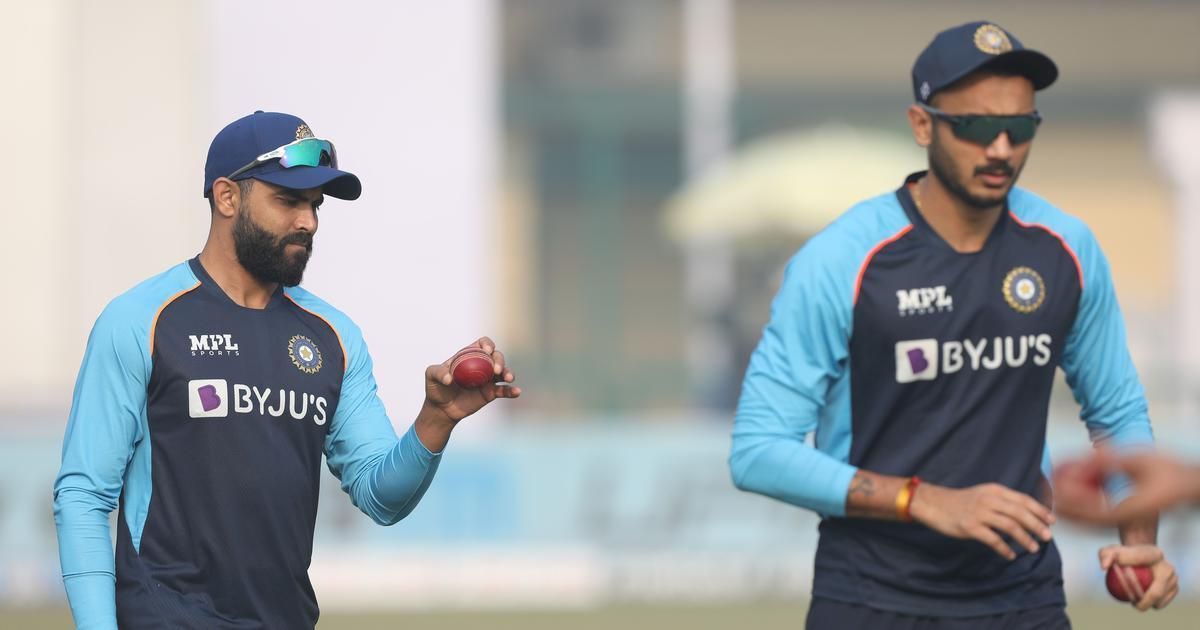
3 ways Axar Patel is a better T20I asset than Ravindra Jadeja for India
Spin all-rounders are a department that Team India have been naturally blessed with over the years. While the current squad has several players fitting the same profile, two of them are too similar for their own good and often find themselves pitted against each other when it comes to selection calls.
Axar Patel and Ravindra Jadeja have both been impressive with their left-arm spin bowling as well as utility batting across formats for India. However, just as it seemed the baton was passed from Jadeja to Axar in T20Is, the selection committee sprung up a major surprise by omitting the latter for the upcoming tour of South Africa.
Instead, surprisingly, not only Jadeja was named in the T20I squad over Axar, but he was also named as the vice-captain of the team. Axar has had a landmark year in T20s, beginning with the 2023 Indian Premier League (IPL), but failed to make it to the Indian squad when it mattered the most.
With the focus on the 2024 T20 World Cup, every match comes across as crucial in terms of preparation, and losing out on the squad for the South Africa T20Is is a huge blow for Axar.
On that note, let us take a look at three ways Axar Patel is a better T20I asset than Ravindra Jadeja for India.
#1 Axar Patel's batting is well suited for the shortest format
Axar Patel's massive improvement with the bat is a huge reason behind his rise in T20 cricket. The all-rounder scored 283 runs for the Delhi Capitals (DC) at a strike rate of 139.41 in the 2023 IPL and has amassed 190 runs for Team India this year at a strike rate of 157.02.
He can get going right away if he is coming into bat in the latter stages of the innings, and can even bat sensibly under precarious conditions. The left-handed batter has shown the ability to read the conditions well, rotate the strike, and absorb pressure when it matters, before accelerating.
On the other hand, Ravindra Jadeja's white-ball batting has waned considerably in an opposite arc when compared to his red-ball batting. He has struggled to find the right tempo to begin his innings and has had issues with strike rotation as well, leading to additional pressure in the middle overs.
Jadeja has a dot ball percentage of 32 with a strike rate of 129 in T20s, which is a worrying set of numbers for a lower-middle order batter in modern-day cricket.
#2 Axar's versatility
Axar Patel has showcased in recent times that he is well capable of bowling in the powerplay as well, something that Ravindra Jadeja has only sporadically done in his career.
Axar has been a welcome relief for the captains who wish to introduce a tightening factor, especially when the pacers have been taken on by the opposition's top-order batters. Being a spinner, he is well adept at bowling in the middle overs, and in certain rare cases, even the death overs, as well.
Furthermore, while there is hardly a bowler who can control the opposition on turning surfaces, Axar presents himself as a better option across all kinds of pitches. He has used the crease and the angles it offers to his advantage and has outfoxed batters with the extra bounce due to his height as well.
In terms of batting as well, Axar is a handy option as a floater if quick runs are required or the team requires a left-handed option in the middle. The floater experiment has been tried and tested with Jadeja, but it has not bore results.
While Axar still needs to prove that he can be a handy option up the order, with his current form, he seems like a much more viable option than Jadeja, at least on paper.
#3 Axar outweighs Jadeja in terms of stats across all departments
Lastly, even if observation falls short, Axar Patel still holds the advantage over Ravindra Jadeja in terms of statistics.
Jadeja has played 308 T20s in his career, scoring 3359 runs at an average of 25.64 and a strike rate of 129. He has taken 214 wickets at an economy rate of 7.56.
Axar, on the other hand, has played 232 T20s, scoring 2545 runs at an average of 22.52, and a strike rate of 134.65. He has taken 196 wickets with an economy rate of 6.99.
The numbers may seem identical, but the fact to consider here is how they have been since 2022. Axar has played almost double the number of T20 matches when compared to Jadeja and has made far more impactful contributions.
With his last T20I appearance coming in the 2022 Asia Cup, Jadeja's on-off tryst with T20s is quite evident, with the primary factor being the hectic cricketing schedule.
Jadeja's talent is unquestionable, and he might have a good run leading up to the T20 World Cup, but it comes at a cost of all the work that has been done so far to cement Axar as a certified first-team player from a mere backup.